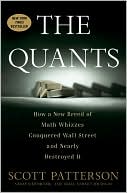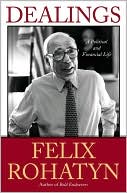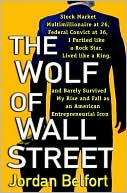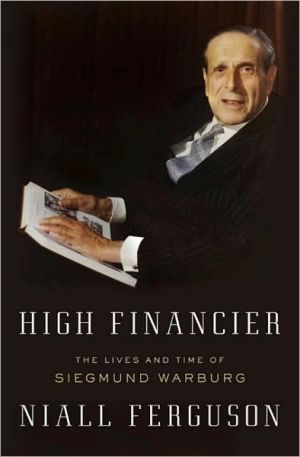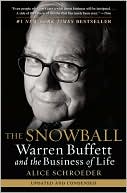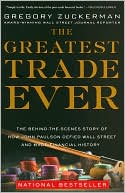The Exchange Artist: A Tale of High-Flying Speculation and America's First Banking Collapse
The riveting story of the country's first banking scandal in the first decades of the American republic\ This enthralling historical narrative of the birth of speculative capitalism in America opens in the 1790s when financial pioneer-turned-confidence-man Andrew Dexter, Jr. created a pyramid scheme founded on real estate speculation and the greed of banks, who freely printed the paper money he needed to finance the then tallest building in the United States-the Exchange Coffee House, a...
Search in google:
The riveting story of the country’s first banking scandal in the first decades of the American republic This enthralling historical narrative of the birth of speculative capitalism in America opens in the 1790s when financial pioneer-turned-confidence-man Andrew Dexter, Jr. created a pyramid scheme founded on real estate speculation and the greed of banks, who freely printed the paper money he needed to finance the then tallest building in the United States—the Exchange Coffee House, a 153-room, seven-story colossus in downtown Boston. The story of Dexter’s rise and eventual collapse offered an object lesson to the rising young nation, and presents striking parallels to the subprime mortgage meltdown and looming economic collapse of today. The Barnes & Noble Review Brandeis historian Kamensky has written an insightful, engaging, and timely account of America's first financial collapse, a crisis caused by risky speculation in real estate. Although Kamensky's story takes place during the presidency of Thomas Jefferson, it will sound eerily familiar to anyone conversant with today's tottering financial system. Boston entrepeneur Andrew Dexter had big dreams. Tying his ambition to the fledgling American banking system, he constructed the biggest building in Boston, a commercial center he named the Boston Exchange Coffee House. Dexter financed this $500,000 project, completed in 1809, with banknotes printed by a series of rural banks that he controlled. To describe these banks as undercapitalized would be an understatement. Dexter's banknotes were backed by only a few hundred dollars in gold deposits, yet he ordered his clerks to sign and issue hundreds of thousands of dollars' worth of (worthless) banknotes, which were then used to pay his suppliers and workers. Kamensky meticulously details how Dexter took control of these rural banks and manipulated them to finance his activities. Dexter also used the press to promote his building scheme and to maintain public confidence in his worthless banknotes. In the end, Dexter's hyper-leveraged plans collapsed as the public discovered his fraud. Confronted with the forced closure of his banks and a government investigation of his crimes, Dexter fled to Canada. Kamensky does a stellar job explaining the fragility of the early American banking system and showing how Dexter took advantage of this fragility. The echoes with today abound. --Chuck Leddy
\ Publishers WeeklyBrandeis history professor Kamensky (The Colonial Mosaic) recounts the story of Andrew Dexter, a chronically overleveraged real estate developer who engineered profound shifts in the economy and skyline of turbulent early America. Dexter built the seven-story Boston Exchange Coffee House, an extraordinarily ambitious project, and helped create a regional exchange system that made banknotes from distant rural locations acceptable in Boston. Unfortunately for his reputation, he is more often remembered as the man responsible for the first bank failure in the United States in 1809. Although he spent the last 30 years of his life on the run from numerous creditors and died in debt, he never stopped juggling visionary projects. Kamensky devotes almost as much attention to the Exchange Coffee House and its impact on contemporary thought as she does to Dexter's biography. She also weaves in an account of Nathan Appleton, born, like Dexter, in 1779, but destined for a longer and much more prosperous and respectable life fighting against Dexter and his ilk. This is a charming popular account of an often-overlooked aspect of American history. B&w photos and illus. (Jan.)\ Copyright 2007 Reed Business Information\ \ \ \ \ Library JournalKamensky (history, Brandeis Univ.; Governing the Tongue: The Politics of Speech in Early New England) weaves together the complicated tale surrounding Boston financial speculator Andrew Dexter Jr. (1779-1837). She shows Dexter as so rushed to make his fortune that he literally created his own money by printing promissory notes that he knew would be hard to redeem because they were drawn on distant banks that he controlled. With these notes, he financed the 1807-09 construction of the famous Exchange Coffee House-a massive combination of financial exchange, eaterie, and hotel. Dexter's scheme fell apart when local merchants determined that his banknotes were worthless and his banks insolvent. Kamensky lovingly details the Exchange building's architecture, operation, and 1818 destruction by fire. She tells of Dexter's exile, his continuing financial woes, and how he inadvertently began, through land speculation, what became Montgomery, AL. Kamensky's explanation of early banking and the dangers of undercapitalized banks is excellent, although she mixes in too much else to call this economic history. Her work is in essence a dual biography of Dexter and his Exchange building, with some fine illustrations of each. Recommended to libraries collecting on the period and especially to those in Boston and Montgomery.\ —Lawrence R. Maxted\ \ \ \ Kirkus ReviewsA narrative of financial chicanery and real-estate flimflam that foreshadows our own times. Kamensky (History/Brandeis Univ.; Governing the Tongue: The Politics of Speech in Early New England, 1997, etc.) returns to prominence the once-notorious speculator Andrew Dexter Jr. (1779-1837), a pioneer currency trader and prototypical hedge-fund operator. Always well-leveraged, Dexter laundered and watered money-at one point he issued $600,000 in notes that were backed by only $86 of actual specie. In a time when banks could independently emit currency, he established bogus depositories as distant as a thousand miles from his Boston base, the better to dispense worthless paper at home. A striver who had Gilbert Stuart paint a portrait he couldn't pay for, reckless and feckless Dexter triggered the young country's first banking collapse in 1809. He wasn't entirely sinister, however; all he wanted was to build the biggest building on the continent, and he didn't mind financing it with subprime mortgages. Often compared to the tower of Babel, the gigantic Exchange Coffee House, "a seven-story structure in a three-story town," was designed to be a bourse, hotel, coffeehouse and office building. Containing more than 150 rooms, a vast trading floor and an atrium, capped by a tin dome, it rose to change Boston's skyline. But just as it opened, Dexter's financial pyramid collapsed, and he fled the country. His combustible skyscraper lasted only a decade, succumbing to a spectacular fire in 1818. (The hand-pumped water couldn't reach the flames on the upper floors.) What happened to the builder and defaulter? Dexter returned to the United States to found Montgomery, Ala., then died bankrupt. Engagingsocial history by a talented scholar with a distinct gift for narrative. Agent: Tina Bennett/Janklow & Nesbit Associates\ \ \ \ \ The Barnes & Noble ReviewBrandeis historian Kamensky has written an insightful, engaging, and timely account of America's first financial collapse, a crisis caused by risky speculation in real estate. Although Kamensky's story takes place during the presidency of Thomas Jefferson, it will sound eerily familiar to anyone conversant with today's tottering financial system. Boston entrepeneur Andrew Dexter had big dreams. Tying his ambition to the fledgling American banking system, he constructed the biggest building in Boston, a commercial center he named the Boston Exchange Coffee House. Dexter financed this $500,000 project, completed in 1809, with banknotes printed by a series of rural banks that he controlled. To describe these banks as undercapitalized would be an understatement. Dexter's banknotes were backed by only a few hundred dollars in gold deposits, yet he ordered his clerks to sign and issue hundreds of thousands of dollars' worth of (worthless) banknotes, which were then used to pay his suppliers and workers. Kamensky meticulously details how Dexter took control of these rural banks and manipulated them to finance his activities. Dexter also used the press to promote his building scheme and to maintain public confidence in his worthless banknotes. In the end, Dexter's hyper-leveraged plans collapsed as the public discovered his fraud. Confronted with the forced closure of his banks and a government investigation of his crimes, Dexter fled to Canada. Kamensky does a stellar job explaining the fragility of the early American banking system and showing how Dexter took advantage of this fragility. The echoes with today abound. --Chuck Leddy\ \

